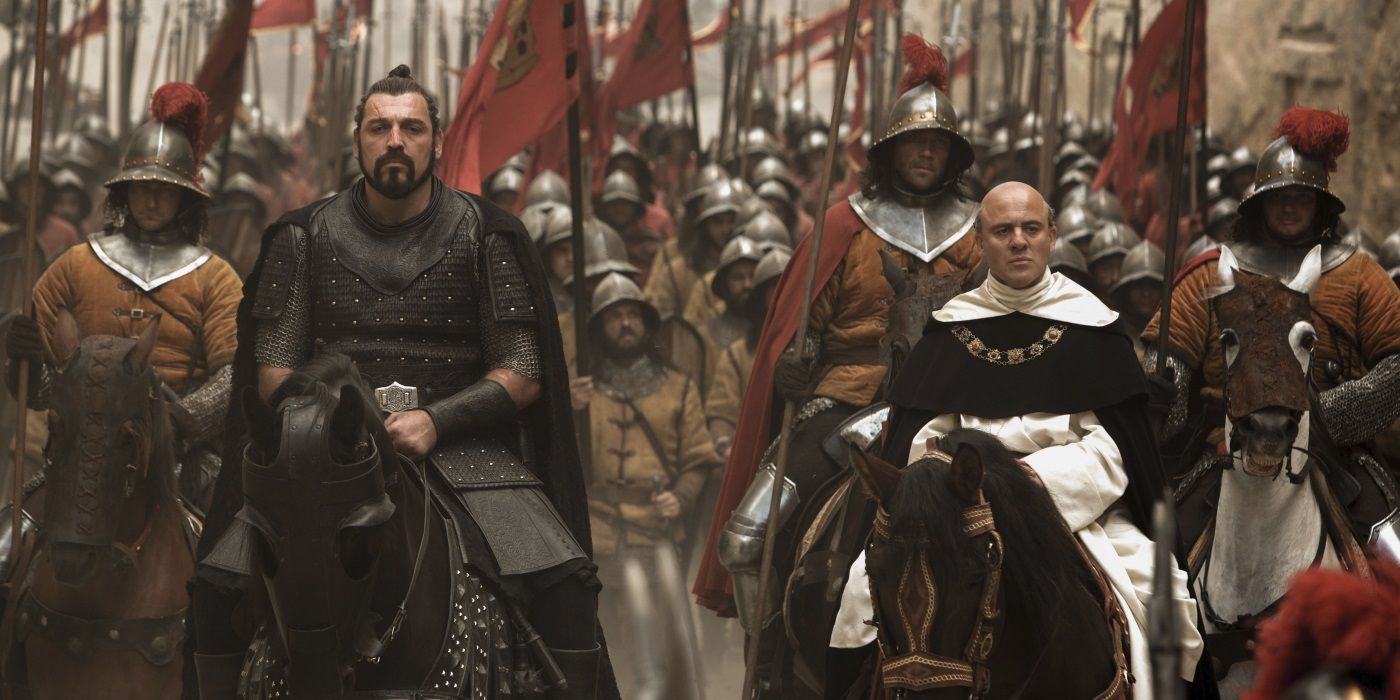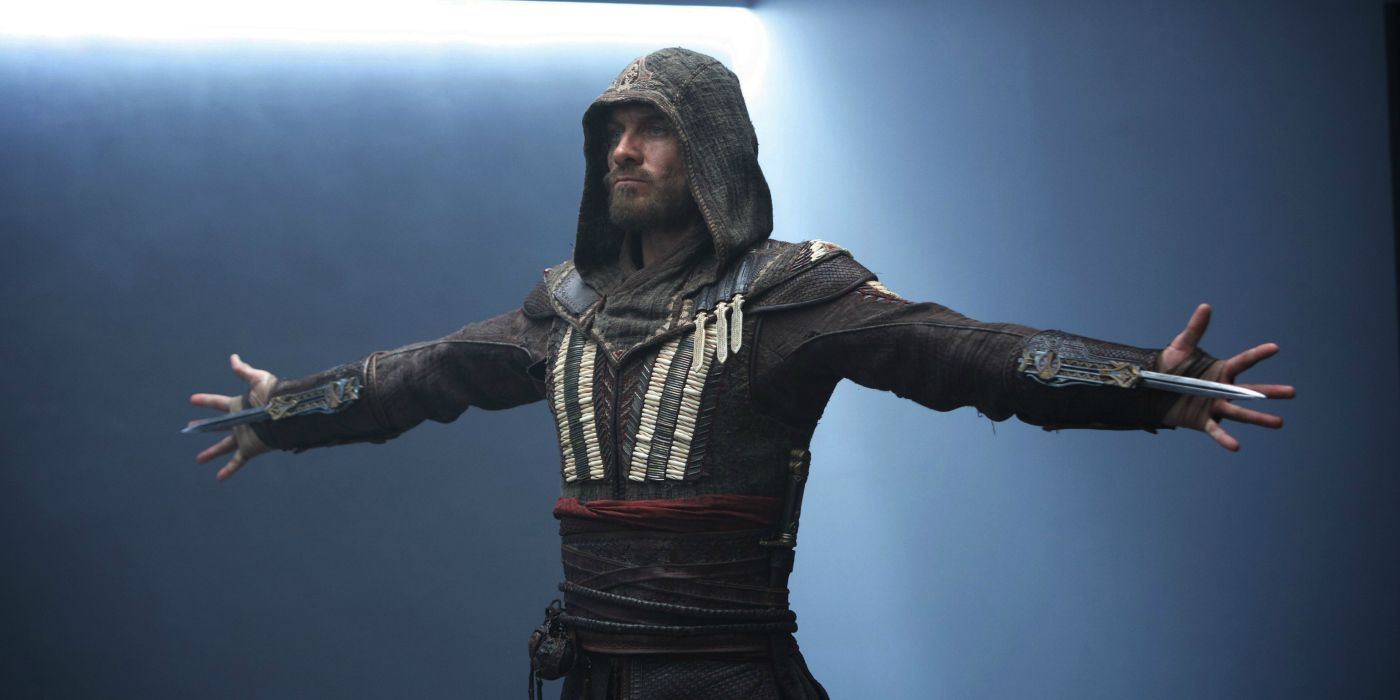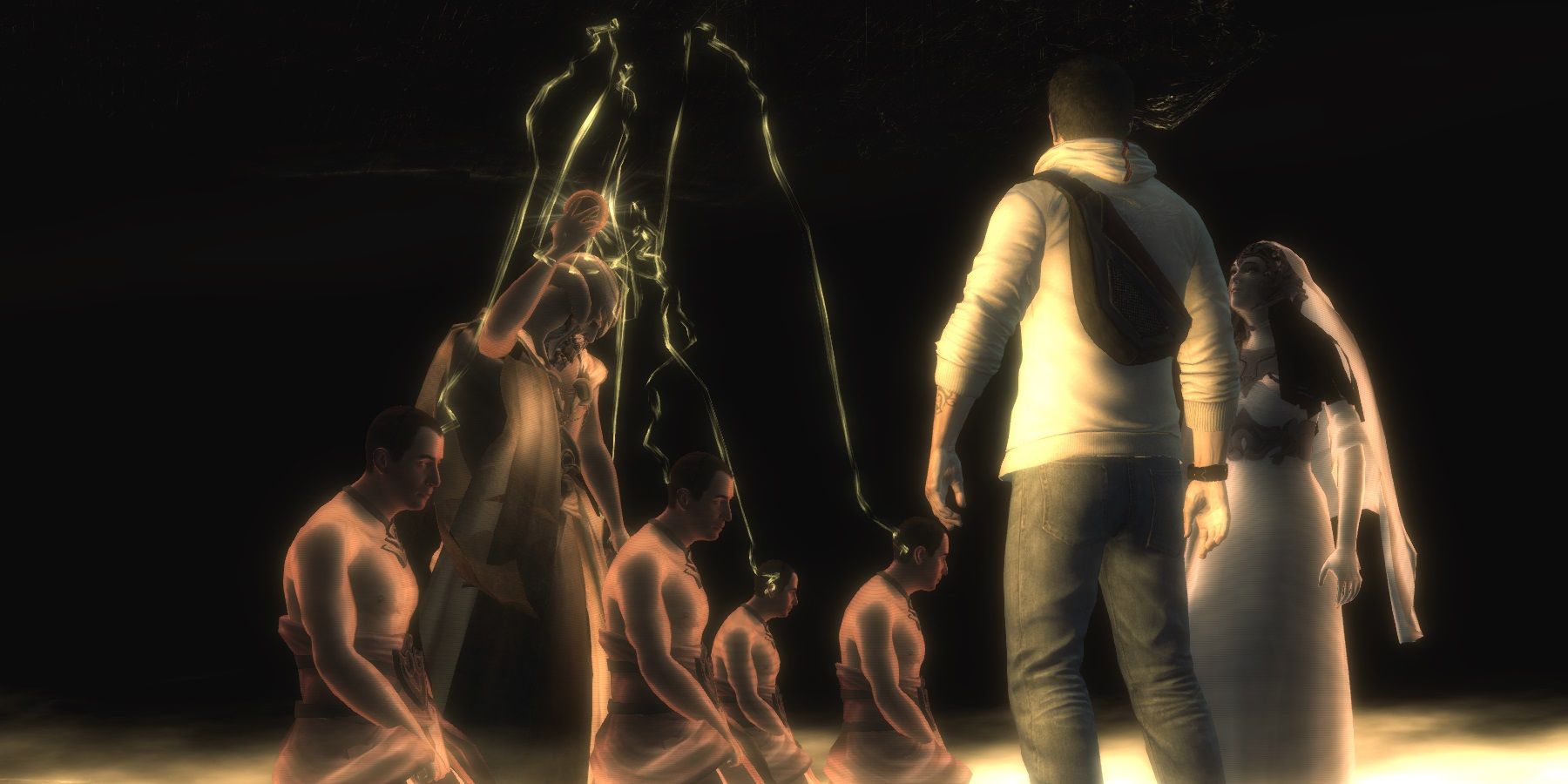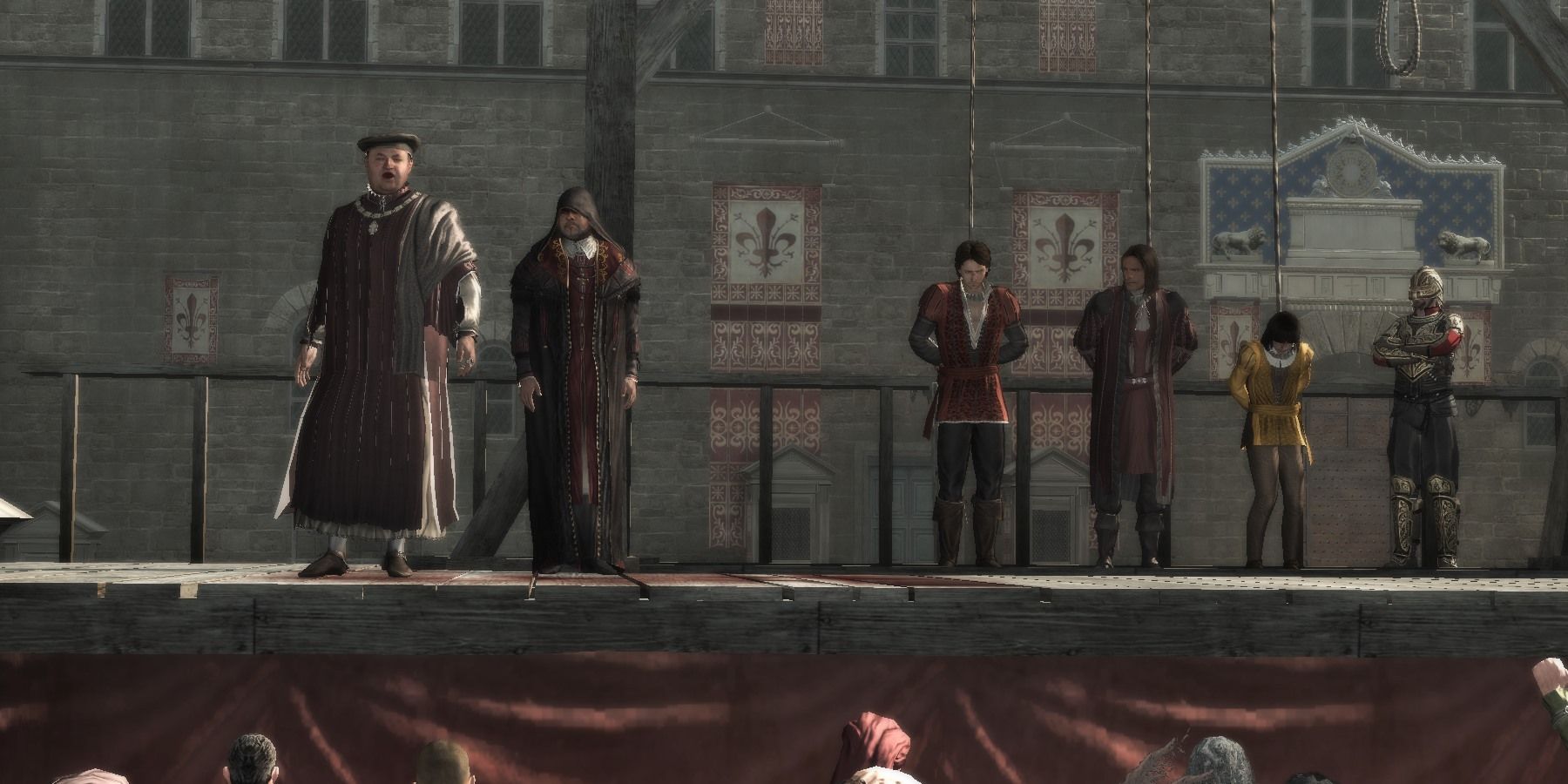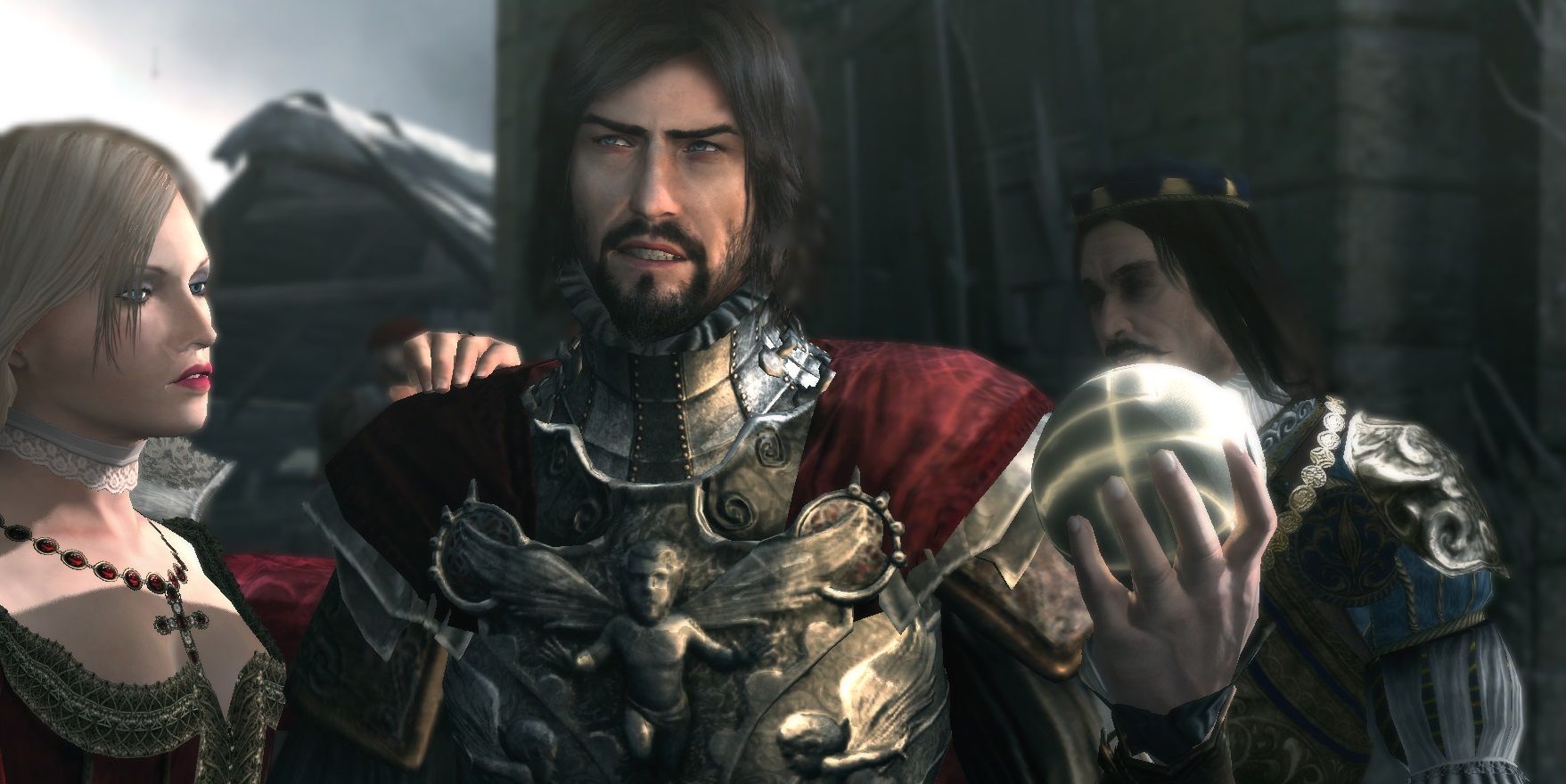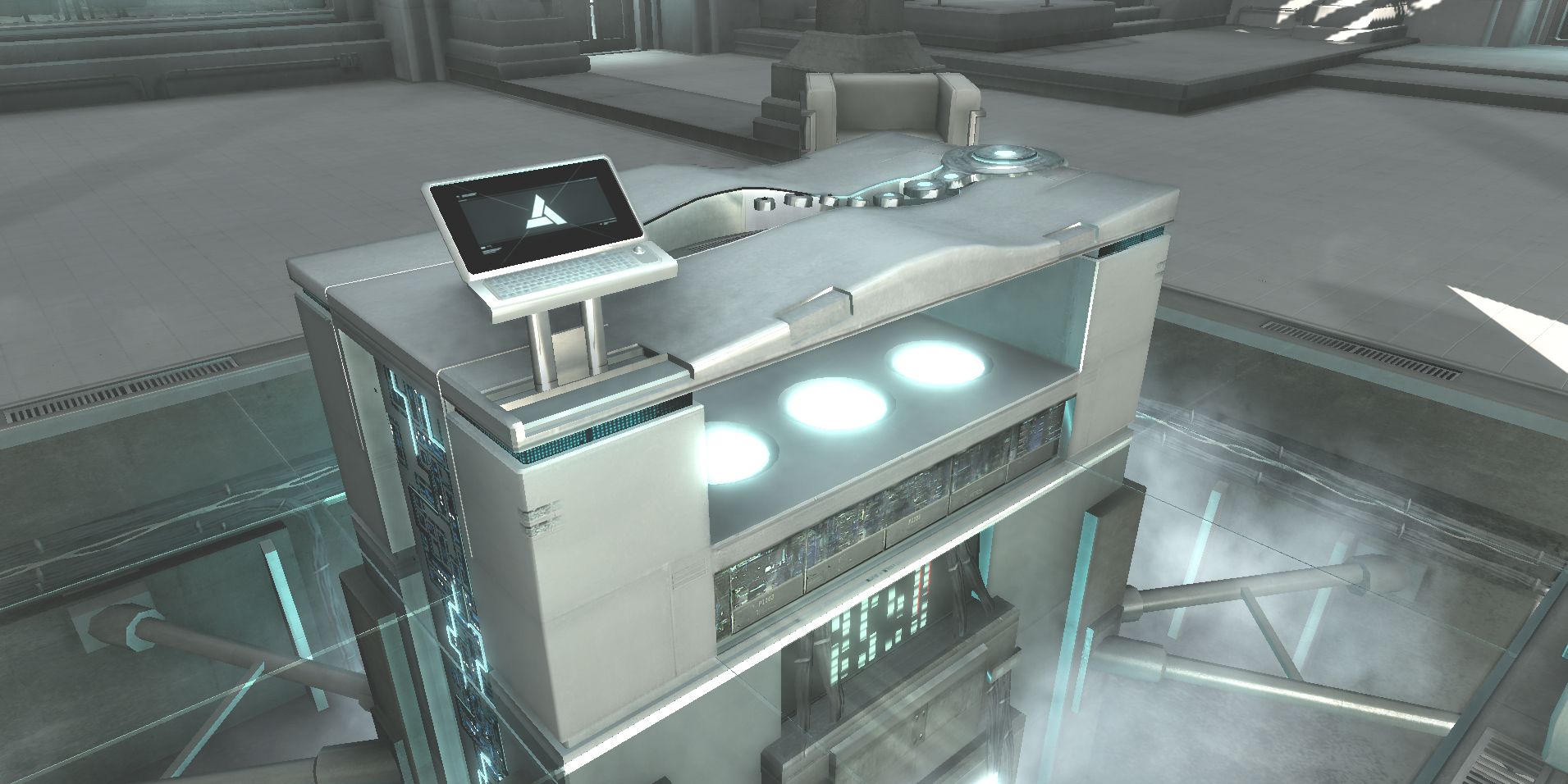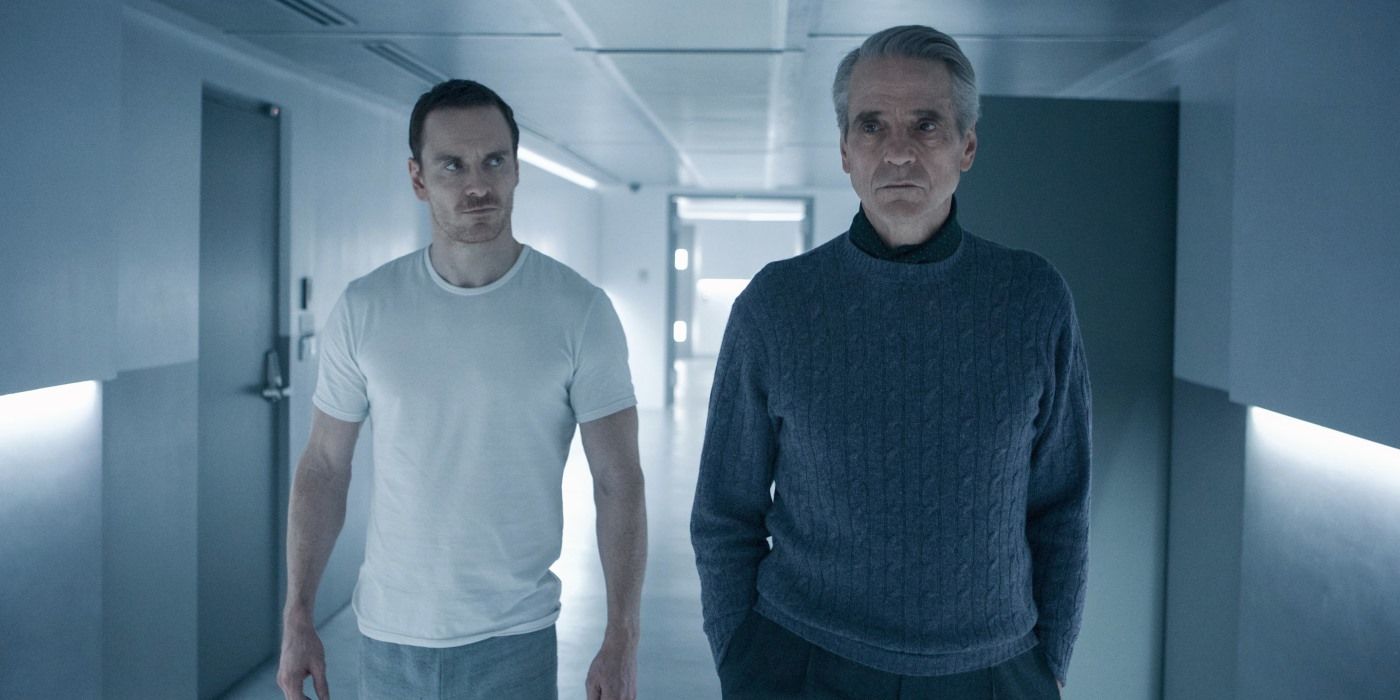NOTE: This article contains SPOILERS for Assassin's Creed
-
It's no secret that the genre of video game movies has left plenty to be desired, as movie studios have shown a tendency to lose the spirit behind the game's success somewhere in the adaptation (at least, that's the commonly held belief). That was all set to change with Justin Kurzel's Assassin's Creed , produced in conjunction with the company that actually created and manages the brand - the ones with the greatest interest in seeing the product succeed, while also remaining faithful to the source material.
If you're a longstanding believer in the rich mythology of the Assassin's Creed series, then the critical reception of the film is fantastic news: the lackluster review scores suggest that this piece of pro-Assassin, anti-Templar propaganda won't be remembered or treasured for too long. But the film only scratches the surface of the true struggle behind the two factions, leaving many of their actual motivations or pursuits unexplored. Since the Templar Order is no ordinary villain, that's something we hope to change.
We've already offered a lengthy breakdown of the must-know information concerning the Assassins, so now it's time to give the Templars their turn in our look at Assassin's Creed: The Templar Order History Explained.
The Birth of The Templars
The story of the Templars is irrevocably tied to that of the Assassin Order, and both begin around seventy-five thousands years BCE, when humanity was only livestock to the true master of Earth. Known as The First Civilization, this race of ancient beings possessed larger brains, the sixth sense of wisdom, and technology far beyond anything mankind can create, even today. And at some point in the distant past, these beings - also known as the Isu - decided that they needed a workforce to help them accomplish their higher ambitions.
The Isu selected an Earthly race of humanoids, and slowly but surely molded them into Homo Sapiens. Using humanity as slave labor was accomplished thanks to that advanced tech, along with neural transmitters embedded inside the brains of humans themselves. By using their technology to manipulate or outright control humans, the Isu's dominance was guaranteed... until, as often happens, the Isu began to breed with humanity, eventually creating offspring immune to the effects of the mind control. After that, it didn't take long for humanity to rise up as one, overthrowing their former masters.
The uprising coincided with a massive cosmic calamity that obliterated life on Earth, leaving around ten thousand humans alive, and the Isu marching toward extinction. In the wake of that destruction, some of the survivors took it upon themselves to oversee the remains of their race, to take the step in guiding them - as their masters had - only this time, it would be towards peace, not subjugation. These descendants of the Human-Isu hybrids would keep to that mission for all time, eventually naming themselves after the temples constructed to house the last of the Isu technology - the Templars. Those brothers and sisters who stood against them would become the Assassins.
The Belief Behind Their Power
If you simply played the first video games in the AC series, then the stories making heroes of the Assassin Order give a one-sided view of the Knights Templar as evil, corrupt, power-hungry tyrants who value only the oppression and domination of humanity. While the Order may attract just as many despots as the Assassins, the true belief of the Templars is, and always has been a noble one, if a more extreme one. In short, the Templars organized themselves throughout the ages based on one simple truth: that humanity is a chaotic race, quite literally created to be led - and to leave them to their own devices was tantamount to cruelty and neglect.
The answer, then, was to lead the masses of humanity towards peace. It's because of this primary goal that the Templars and Assassins originally found their causes aligned - and, to be fair, have cooperated throughout history. But where the Assassins believe that the only path towards true peace is to free humanity from any and all restrictions or ideologies, the Templars despise such 'freedom,' seeing it as the most direct route to anarchism, nihilism, and the collapse of the species. The Assassins may attempt to cast these goals in an evil or malevolent light due to the darkest, most power-hungry individuals to ever call themselves Templars, but their core belief is as ambitious as their enemies'.
The Templar Order does not want to attain power so that they may keep it for all time, but instead wish to influence or occupy leading roles throughout human history so as to guide it upward, out of the dirt and toward humanity's best possible self. But to do that, people need powerful leaders to follow behind - an idea the Assassins roundly refuse... despite all of human history, arguably, supporting the thought.
Of course, the Templars didn't make it too hard to cast them as the villains, either. By sticking to the idea that humanity couldn't guide itself from chaos to order, they would make enemies of anyone who felt differently. Not only that, but in their mission to guide the greater good, Templars were willing to accept the harm or death of countless innocents - viewed as the cost of the race's advancement as a whole. And in the world of fantastic fiction, the secret society that's willing to slaughter the innocent to reach their goal isn't usually deemed 'heroic.'
Where the Assassins earned the trust of the people by acting in their interests - at least in a direct sense most people could understand - and existing as part of the crowd, the Templars exercised their influence over figures of power. The Order succeeded in bringing plenty of exceptional historical figures into their fold (either before ot after they established themselves on the world stage) by appealing to their innate desire to break humanity from their vices, and heed their better angels. Those angels were the Templars themselves, and the Assassin's were always there to keep the people from listening to... well, anybody at all.
The Templar-Assassin War
The war that started tens of thousands of years in the past between the Assassins and the Templars was one of cycles, with the Templars gaining a push in the right direction for civilization, and the Assassins rising up to slit the throat of those leading the movement (a deed viewed far worse by the Templars, since the death of an exceptional person was a far greater loss to humanity than countless members of the unwashed masses). Unfortunately, the focus placed on the Assassin's side of the Templar-Assassin War in the fictional novels, games, and comic books leaves the true machinations and history of the Templars cloaked in secrecy.
What we do know is that nearly every historical figure who made their mark by uniting humanity under one banner through military force - Alexander the Great, Xerxes, Caesar Augustus - were members of the Templar Order. So, too, were those historical figures generally tarred as monsters, cretins, or power-hungry monsters (whether the descriptions were true or not). And so things continued, until the forgotten technology of the First Civilization re-emerged in the 12th Century.
From that point on, the Templars realized that their methods could be far less subtle than they had in past, with weapons and devices capable of granting members of their Order unspeakable power and influence. As the Templars spread across Europe, Asia, and to the New World both using and in search of more Isu artifacts, the Assassins kept pace, seeking to unlock the same secrets to prevent the use of such relics. But history had other ideas.
The Pieces of Eden
If the Templar Order's aims of controlling, guiding, and existing above civilization was already attractive to the wealthy and influential of the world, the addition of magical artifacts granting even more power didn't help things. Not only did the attraction of mystical artifacts draw newcomers to the cause, but cast a wide net in doing so. Since the objects of power were easier to see and believe than the ancient civilization that created them, atheists who favored science and technology above the prevailing religious thinkers of the time were obssessively drawn to them. Meanwhile, those who saw the artifacts as evidence of God were able to pursue the relics while cloaked in the power of the Church.
The pursuit of such 'Pieces of Eden,' as they were called, make up most of the larger Assassin's Creed mythology, as historical figures used them to pursue their own causes (knowingly or not). And as the Industrial Revolution dawned, the Templars saw the opportunity to both control and subjugate the masses of the working class like never before, while using the Pieces of Eden to advance technology, while that technology unlocked new ways of understanding said relics. And across the Atlantic Ocean, the Templars' methods began to change.
In Europe, Adolf Hitler used one Piece of Eden to hypnotize Germany into following his radical mission, and intended to keep using it until an Assassin killed him, bringing the war to an end. While in America, the Templars used a more subtle hand, placing Templar members Thomas Edison, Henry Ford and Harvey Firestone at the leading edge of the New World Order - creating electricity and the assembly line to keep the working class under control. It marched humanity into the future, but as a direct result of some key victories against the Assassins throughout the founding of the New World.
The Animus: The Modern Battlefield
After unlocking the secrets of mind control and mental conditioning throughout the second half of the 20th Century, the Templars who had once worn the Catholic Church as protection found a new armor in the form of Abstergo Industries, a tech conglomerate masking their true nature. The prime result of their research into the Pieces of Eden was the Animus, a device able to allow a subject access to the memories of their ancestors, encoded within their genetic code. With so much of the Isu tech and legacy lost to time, the Templars had hatched a clever plan for filling in the blanks.
But allowing their own members to re-live their ancestors' memories serving the Templar Order only helped them to locate the information that their own side of the conflict possessed. They would need both, and therefore set their sights on the modern-day Assassins to unlock the true secrets of the Isu (and their many vaults and relics scatters across the globe). Recruiting individuals who were completely unaware of their ties to the Assassin Order was the easiest solution, and the Animus Project got under way.
Since attacking the Assassins in such a way would gain attention, the Templars first managed to insert a sleeper cell into their enemies' ranks, assassinating their leader and spilling the secrets of the Assassin Guilds around the world - which were all but wiped out in a massive military strike soon after. With a handful of Assassin children now lost and oblivious to the secrets contained in their DNA, the Templars began recruiting (it's here where the Assassin's Creed video games and movie come in).
Where The Movie Fits in The Story
The Assassin's Creed movie makes some changes to the story of the original game, but the same skeleton is adhered to. This time around, it's Callum Lynch (Michael Fassbender) who is recruited by Abstergo for their Animus research, completely unaware of his Assassin heritage. The Abstergo brass - led by Dr. Alan Rikkin (Jeremy Irons) and his daughter, Sofia (Marion Cotillard) - keep the Templars behind the company a secret, since one trip into the memories of his Assassin ancestor, Aguilar de Nerha would reveal that they are the enemy.
For fans of the finer points of the fiction, the movie is actually set within the continuity established by the games. Aside from Dr. Rikkin actually being an existing character in the game universe, Cal Lynch also gets to try out the new Animus 4.3. The Animus had previously been restricted to a single chair, requiring the subjects to stay motionless while accessing memories, but on the big screen, it lets the subjects act out their adventures 1:1. Sure, you need to get a spinal tap to do it, but... the coolest experiences come with a cost, right?
The real downside for the Templars running the project is the same one that's been plaguing their subjects since the very beginning: what's called the Bleeding Effect. Basically, after spending long enough in the mind and body of an Assassin ancestor, the subject begins to change: adopting the skills, the visions, and even the moral calls to action of their ancestors. In most cases, these hallucinations cause the mental collapse of the subject. But in rare cases - or with the right leader - these prisoners can revolt, rising up to overcome their Templar jailers... joining the modern Templar-Assassin War still raging to this day.
After that... the possibilities are endless.

